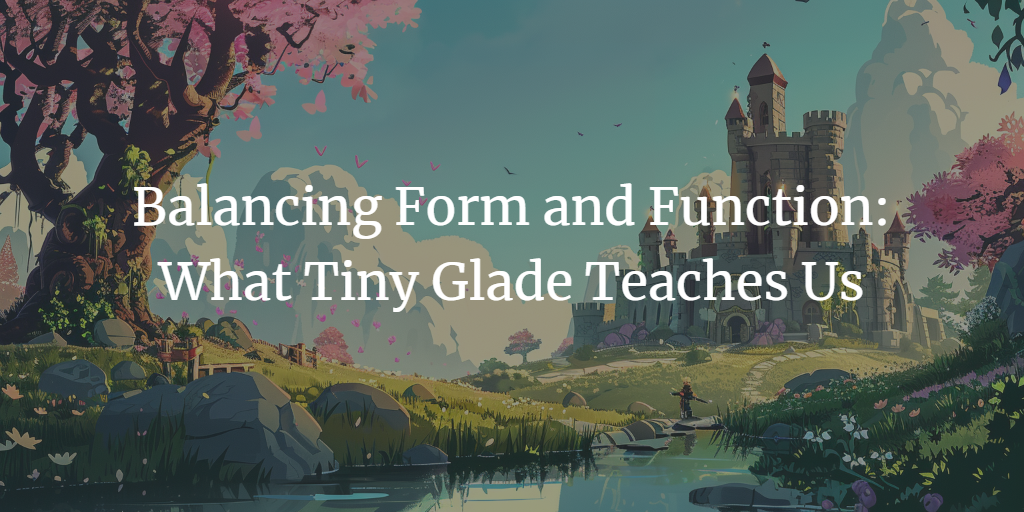I just downloaded the demo for a wonderful little game called Tiny Glade. "Game" might not even be the right term to describe this interesting piece of software. Here’s how it introduces itself:
Tiny Glade is a relaxing game where you doodle whimsical castles, cozy cottages and romantic ruins. There's no management, combat or goals. Just kick back and turn forgotten meadows into lovable dioramas.

After spending some time with Tiny Glade, I am impressed by the level of care the developers have put into it. The attention to detail is remarkable. Every interaction feels organic and fluid, thanks to numerous subtle features.
At its core, Tiny Glade is a castle-builder sandbox. You construct castles by laying down building blocks that can be translated, rotated, scaled, and joined. Essentially, it's a graphics editor like Blender or Illustrator, but much more enjoyable, especially for first-time users. Why? Because Tiny Glade focuses on form as much as function.
The game’s emphasis on form does not come at the expense of function. It offers great flexibility while maintaining a natural and intuitive feel. Every action has a corresponding visual or sound effect, enhancing the experience without being overwhelming. This level of craftsmanship makes interactions pleasing.
Words can't really do it justice, so here's a gameplay trailer video.
This experience made me question why the applications we use daily don’t offer the same level of enjoyment. Many business applications prioritize function over form, resulting in user frustration. Product owners often justify this by citing monetary reasons, implying that investing in form is a waste. But Tiny Glade proves otherwise.
As software developers, we should recognize the intrinsic value in form. People are willing to pay for pleasant interactions with software. While the balance between form and function varies by application, it is clear that focusing solely on function might be costing us more than we realize. I'm confident that Tiny Glade will show that enhancing user experience can lead to commercial success.


Comments